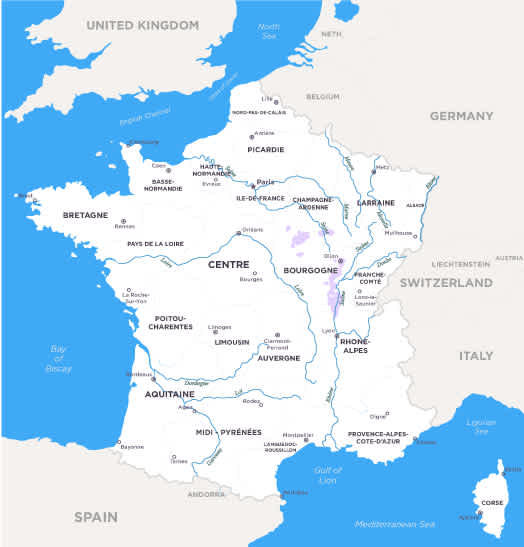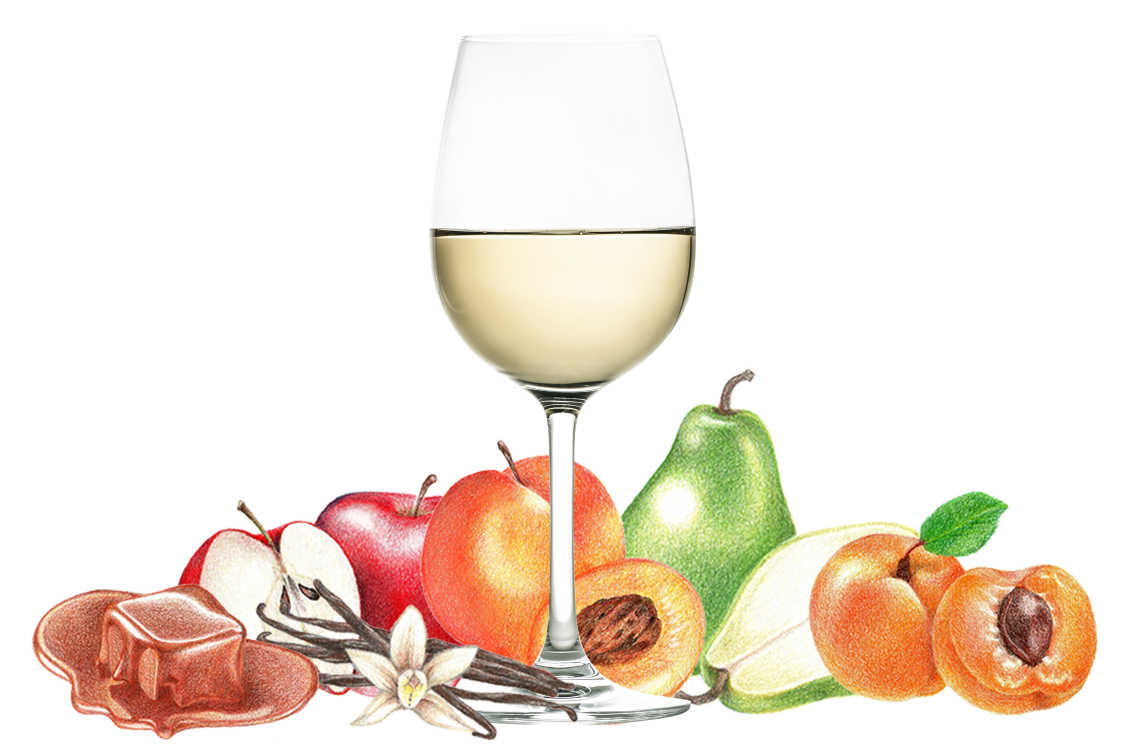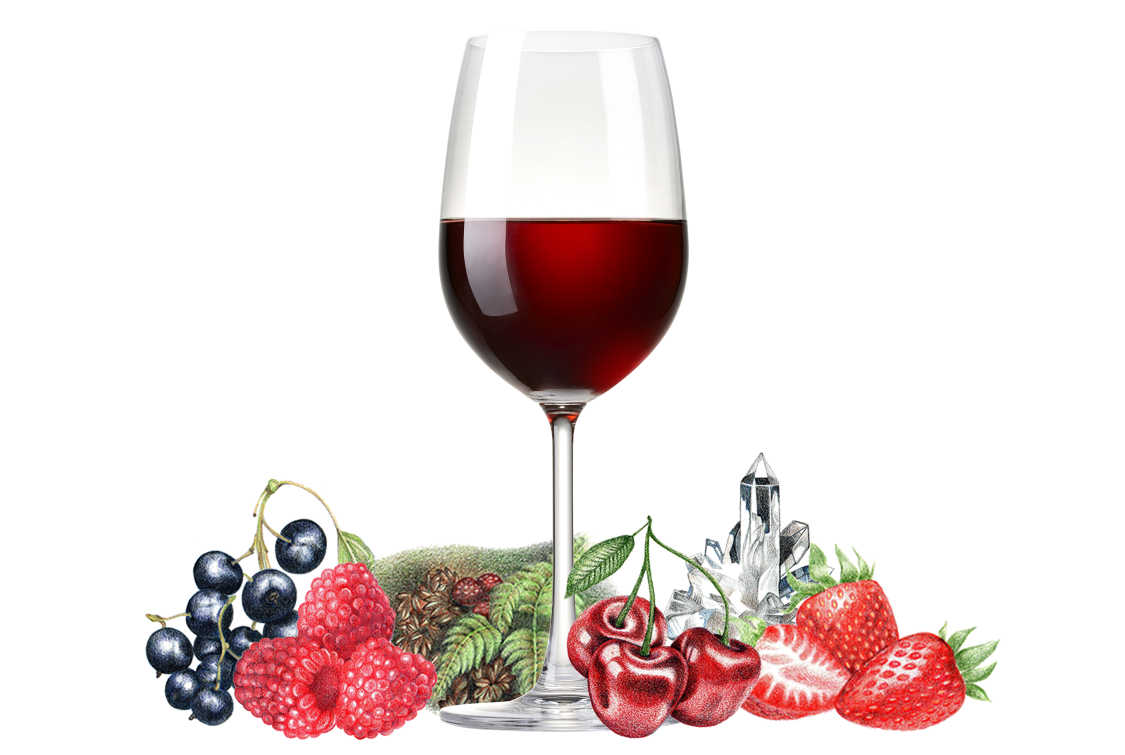Burgundy
Burgundy is home to some of the most sought after (and delicious) wines in the world
The Burgundy wine region is a narrow strip in central-eastern France that follows the Saône River, stretching north to south from Dijon to Lyon. It covers about 30 miles in the region now known as Bourgogne-Franche-Comté, with vineyards divided between three départements: Côte d'Or, Saône-et-Loire and Yonne. This French region is so special that it earned UNESCO's World Heritage site designation in 2015.
Burgundy is home to some of the greatest and also some of the most expensive wines in the world. This is mainly because wines from certain prestigious appellations are made in extremely small quantities, such as the grand cru sites of Montrachet and Romanée-Conti. While Burgundy is renowned for these famed bottlings, it also has many lesser-known appellations producing great-value wines that are ripe for discovery. Here's your guide to the wines and terroirs of Burgundy.
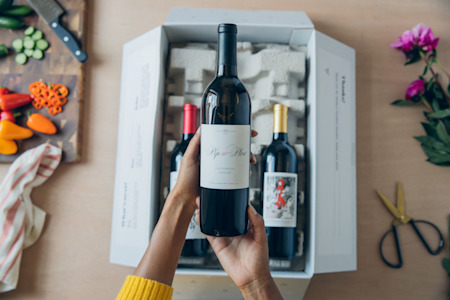
Take Our Quiz Today
Get award-winning delicious wines from all over the world shipped straight to your door. Take the quiz to get the perfect pairings for your holiday season.
Take The Quiz TodayIN THIS ARTICLE:
Grape Varieties and Flavor Profiles
Burgundy is very straightforward when it comes to the grapes its vintners use: reds are 100% Pinot Noir and whites are 100% Chardonnay. There are a few exceptions, however. The generic Bourgogne Appellation d'Origine Contrôlée (AOC) allows Aligoté in its whites, as well as Pinot Gris up to 30% of the blend; it also allows Gamay up to 30% in its red blends. Coteaux Bourguignons is also a regional appellation that allows blends of all the aforementioned grapes. Then there's St.-Bris, a complete outlier that makes white wines from Sauvignon Blanc.
While Beaujolais is often considered a region in its own right, it is technically within Burgundy's borders at its southern end, on the Rhône Valley's doorstep. Here, the reds are 100% Gamay, and are labeled Beaujolais, Beaujolais-Villages or by one of its 10 crus: St.-Amour, Juliénas, Chénas, Moulin-à-Vent, Fleurie, Chiroubles, Morgon, Régnié, Brouilly and Côte de Brouilly.
Burgundy wines' flavor profiles vary depending on the winemaking and specific terroir they hail from, but there are broad generalizations one can make. Whites are medium- to full-bodied, with ripe orchard and stone fruit—think apple, pear, apricot and peach. Leaner versions tend to emphasize citrus notes a little more. Vintners often use oak barrels, sometimes new, lending flavors like vanilla, spice, butter and caramel.
Red wines are light- to medium-bodied, leaning heavily on red fruits: cherry, raspberry, strawberry, red currant, and sometimes plum in riper versions. They can also show earthy or floral details. Generally speaking, tannins in red Burgundy are quite low, in keeping with Pinot Noir's thin skins.
Appellations and Hierarchy
The Burgundy region has several subzones. The vast Côte d'Or, which encompasses the Côte de Nuits and the Côte de Beaune, is the most important. Then there's Chablis, the Côte Chalonnaise and the Mâconnais. Within these areas, appellations are further broken down into villages and crus—also called climats.
Unlike Bordeaux, where the classification is based on the châteaux, Burgundy's system is based on its terroirs. Village-level appellations are subdivided into grands crus and premiers crus vineyards. The latter is listed as an addendum to the village name on a label; the former are appellations in themselves. For example: Gevrey-Chambertin is the name of a village and an appellation; Les Cazetiers is the name of a premier cru vineyard in that village and wines from here are labeled "Gevrey-Chambertin Les Cazetiers"; Le Chambertin is a grand cru vineyard and the name appears alone on the label.
Because of inheritance laws in France and decades of land being passed from generation to generation, these vineyards are fragmented in terms of ownership. Vintners here often own (or lease) vines in many different climats, and very few monopoles (when a vineyard is owned by just one domaine) exist. Let's delve a little deeper into the various subregions and appellations, from north to south.
Chablis
Chablis wines, which are exclusively white, are on the leaner side of the spectrum in Burgundy. This is due to the appellation's more northerly—and therefore cooler—location, but also to its soils: As well as the typical Burgundian limestone, it has a lot more Kimmeridgian soil than elsewhere in the region, lending a chalky minerality to the wines (Champagne actually has similar soils). Winemakers here also don't tend to use new oak, which means you don't get that textural roundness or the buttery notes you often find in Chardonnays that hail from farther south. Chablis has 40 premiers crus and seven grands crus.
Côte de Nuits
The Côte de Nuits is the northern half of the Côte d'Or, and red wines make up the majority of its production. In fact, all but one of the red grand crus in Burgundy are located here. Overall, it has 24 grands crus and 135 premiers crus.
Villages of note include Chambolle-Musigny, Gevrey-Chambertin, Morey-St.-Denis, Nuits-St.-Georges, Vosne-Romanée and Vougeot. In terms of grands crus, the main ones (among many) to remember are Le Chambertin and Chambertin Clos-de-Bèze in Gevrey-Chambertin; Romanée-Conti, La Romanée, La Tâche and Richebourg in Vosne-Romanée; Le Musigny in Chambolle-Musigny; and Clos de Vougeot in Vougeot.
Côte de Beaune
The Côte de Beaune is the southern half of the Côte d'Or, and is the exact inverse of the Côte de Nuits in terms of wine color: White wines make up the majority of its production, and all but one of the white grand crus are located here. It has eight grands crus and 42 premiers crus in total.
Well-known villages that make some of the best white wines in Burgundy include Chassagne-Montrachet, Corton, Meursault and Puligny-Montrachet. Corton-Charlemagne, Bâtard-Montrachet, Chevalier-Montrachet and Montrachet are among the most noteworthy grands crus.
Volnay, Pommard and Corton (a grand cru) are also good sources for lauded reds, despite the white wine focus in this portion of the Côte d'Or.
Côte Chalonnaise
Moving farther south, the Côte Chalonnaise doesn't quite have the prestige of its northern neighbors, but it certainly should not be overlooked. The wines made here generally command much lower prices, and remain enjoyable and true to Burgundy's terroir. The main appellations of note here are Givry and Mercurey, which mainly make red wine; Montagny, which is exclusively Chardonnay; and Rully, which is fairly evenly split between red and white.
Mâconnais
The Mâconnais is in a similar boat to the Côte Chalonnaise, making good-value, everyday-drinking wines. However, the subregion makes mostly white wines, with some red. It's warmer here, and the wines generally reflect this with riper fruit and rounder profiles. The catchall Mâcon-Villages makes solid wines; for a step up in quality, try bottlings from Pouilly-Fuissé, St.-Véran or Viré-Clessé.
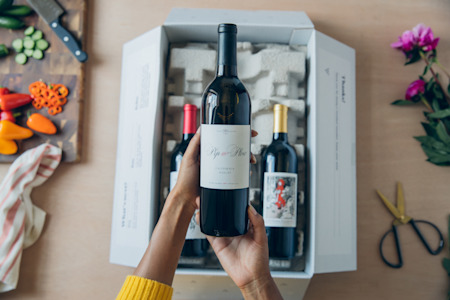
Take The Quiz
Learning about different wine varietals and regions is fun. Take the quiz now to explore wines matched to your unique palate.
Take The QuizIN THIS ARTICLE

WinePrint™ by Firstleaf
Are you looking to learn more about your wine preferences? Check out our Wine Print for an in-depth look at your personal tasting profile. Discover your favorite wines, varietals, regions, and tasting notes and get personalized recommendations wherever you are.
Learn More